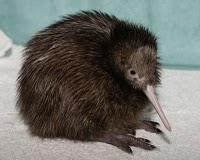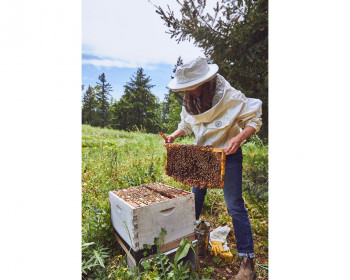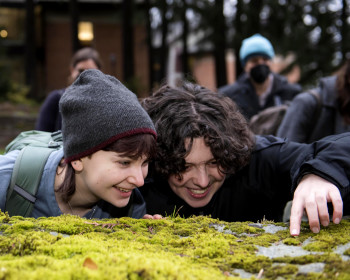Lessons from New Zealand: A Conservation Primer (Part 1 of 3)
Open gallery

May 22, 2009
It seems all too easy to throw your heart, soul, and energy behind conservation. In theory, at least. Sure, we talk about the value judgments conservation is inevitably entrenched in. But I think it is safe to say that it was not until this past semester in New Zealand that all twenty-two of us who participated in this study abroad program truly realized the complexities of the (perhaps) blindly praised art of conservation. These moral dilemmas certainly were not resolved upon the conclusion of our studies, each of us emerging with some sort of internal conflict concerning the issue.
Our program was biology-focused, with courses on the biogeography, conservation, and cultural heritage of New Zealand, and life in extreme places (namely, Antarctica or geothermal sites). Most of our learning was on the road as we circled the entirety of not only the North Island and South Island by bus, but also a few Subantarctic islands via Russian icebreaker. We were never without a well-informed brain to pick, as countless professors from Victoria University in Wellington followed along giving lectures on roadside stops or post-dinner pajama lectures in the hostels. From the moment we stepped off the plane, issues of conservation were readily apparent. As we all passed through biosecurity, most of us had to have our well-used hiking boots scrubbed to remove any caked-on mud that could hold seeds of plants yet to be introduced to NZ. This is when I realized that they take this sort of thing pretty seriously around here.
The land of Aotearoa was, in essence, the perfect place for the core of conservation to be confronted. A few basics about the country must be established first. New Zealand has known a long history of isolation and lack of human settlement. Having been fully separated from the rest of Gondwana (that is, Australia, Antarctica, Africa, and South America) for a good 60 million years due to the development of the Tasman Sea, mammals simply missed the boat. This allowed for the biota of the landmass to evolve without the usually dominant mammals. Furthermore, New Zealand’s isolation as an island also allows it to maintain much of its unique flora.
It is pretty easy to see the enormous gaps that are left in the biosphere, and the fauna of New Zealand also took note. It is often said that New Zealand is a case study of what would happen if birds ruled the world. You will find dozens of flightless species, many of which could not be considered “street-smart” in any way. They are often ignorant of the threat any mammal, human or non-human, could pose. Another important factor in New Zealand’s story is that it was the last major landmass to be settled by humans. It was not until around 800 years ago that the Maori people, quickly followed by Europeans, came onto the scene. And with them, of course, came all sorts of mammals (rats, livestock, possums, stoats, cats, dogs, etc.), and a full menu of eager plants, whether intentionally or not. It is not hard to see how New Zealand’s quirky natural history primes it to be a fantastic case study for conservation.
More Environmental Studies Stories
Environmental Studies is located in room 343A of John R. Howard Hall on the Undergraduate Campus.
MSC: 62
email envs@lclark.edu
voice 503-768-7790
fax 503-768-7620
Symposium Advisor Jessica Kleiss
Environmental Studies
Lewis & Clark
615 S. Palatine Hill Road MSC 62
Portland OR 97219


